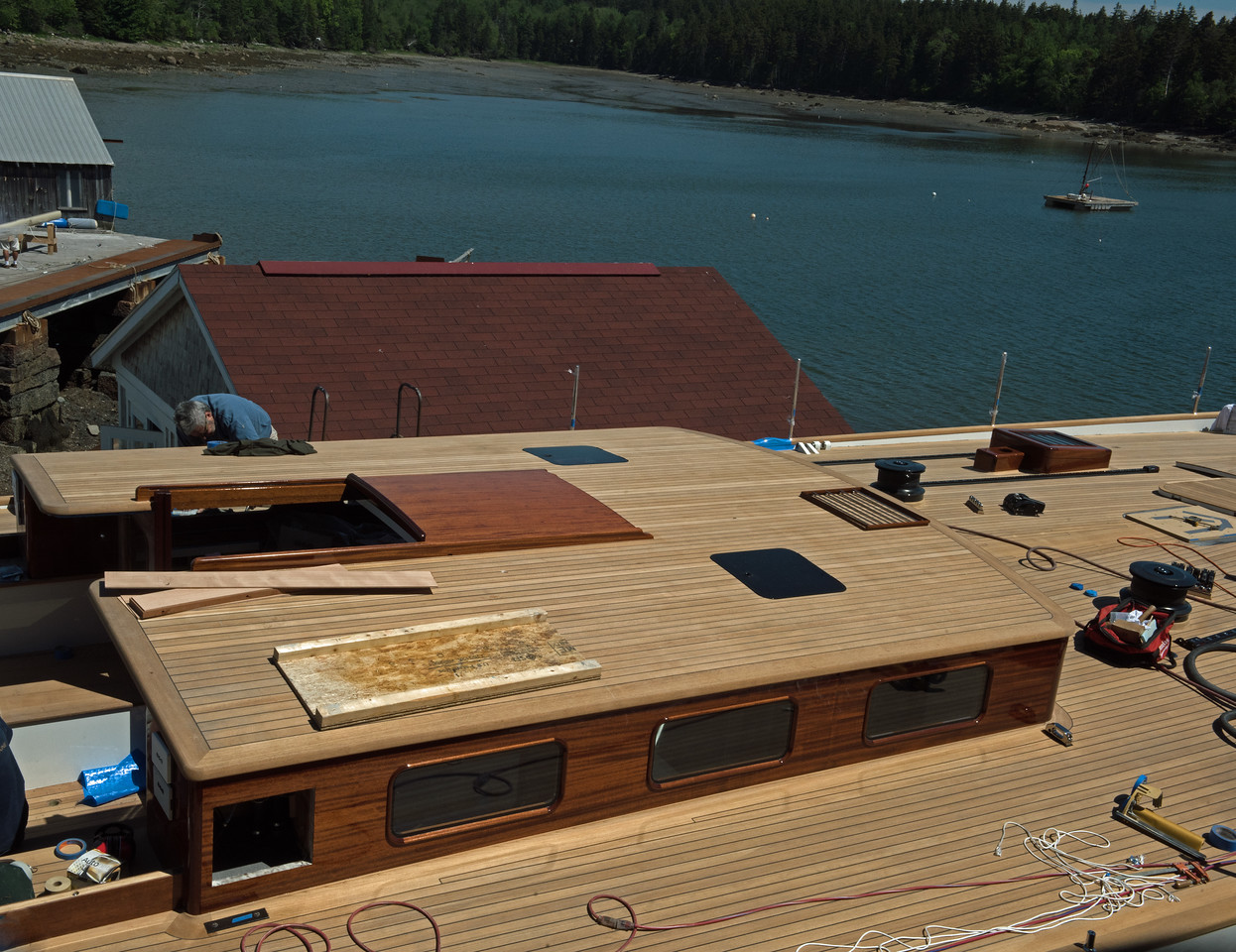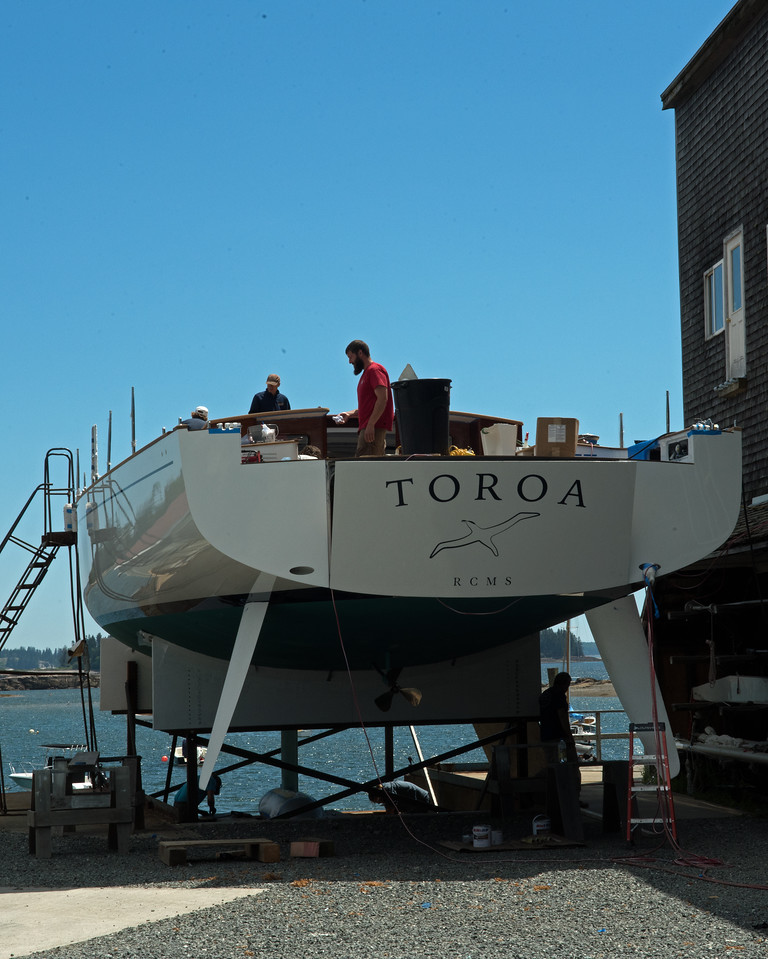This fuzz ball is a Broad-Winged Hawk in a nearby nest that we’ve been monitoring. We haven’t seen a sibling, but the nest is high and we don’t get too close. (One fledgling would not be rare.)
We guess that this bird is about three weeks old, since its mother now feels free to leave the nest for long periods. In a week or so, the youngster should start climbing on the branches near the nest. About a week or two after that, it should be fully fledged and fly from the nest, learning to hunt mostly by trial and error. (Brooklin, Maine)


































